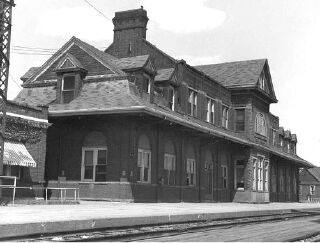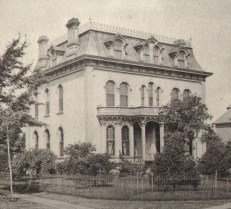After running across and reading the following article in The Port Huron Times Herald (October 9th, 1923, page 1), I couldn’t help but say “I love Jenks.” This is William Jenks, of course, the author of the 1912 St. Clair County history book, important Michigan map collector, and a primary mover in the building of the Carnegie Library (now museum) here. My sentiments on the subject are expressed by Jenks wonderfully; some brief explanatory notes and a historic map follow. Enjoy!
_______________________
“Preserve Historical Names, Attorney’s Plea”
“Protest against the changing of the name of Gillett street to Hammond street, which was recently asked by the residents of the street in a petition to the city commission, is voiced in a letter sent the commission by W. L. Jenks, prominent attorney of Port Huron and member of the state Historical society.”
“In his letter Mr. Jenks comments on the tendency resent in cities today to give streets high-sounding and meaningless titles, and deplores inappropriate and thoughtless changes. he points out two blunders in changing street names made recently by the commission.”
“The letter follows:”
I noticed recently that a petition had been filed with you to change the name of Gillett street to Hammond street in honor of the late Lieut. Hammond.
I sincerely hope that the name will not be changed. Gillett street commemorates the name of one of the early prominent citizens of Port Huron[,] a man of the highest character, one of the leading business men and a man who was very generous and public-spirited, and his name ought not to be forgotten in this city.
I do not wish to belittle in any manner the propriety of naming a street in honor of Lieutenant Hammond, but there are several streets in the city which have names that do not contain any significance and the changing of a name of that kind to commemorate the name of Lieut. Hammond would be appropriate in every way.
The city has already made two serious blunders in the changing of names of streets–when it changed Butler street commemorating the name of an honored man of national reputation, and a prominent philanthropist, to Grand River avenue[,] a name which has absolutely no significance here. The name apparently was copied from Detroit where Grand River avenue has a meaning, it being the direct route from Detroit to the Grand River country, including the cities of Lansing, Grand Rapids and Grand Haven.
The name of Suffern street which bore the name of prominent merchant of New York City who was largely interested in Port Huron property for several years was changed to Glenwood avenue, a high sounding name which has no appropriateness as there is neither a glen nor any wood in or near the street.
Such changes are to be deplored and not to be encouraged by good citizens.
The city did not change Gillett to Hammond, as there is no Hammond Street in Port Huron and Gillett is still there. Lieut. Hammond is remembered here though, as the American Legion post is named after him. On Gillett/Gillette and Jenks streets, a 1925 article states: “Gillette street is named after Martin S. Gillette, lumberman and president of the village board in 1850. Jenks street is named after W. L. Jenks, pioneer and historian of the county” (there were other prominent Jenks in Port Huron, too; “Street Names Tell the History of City,” The Port Huron Times-Herald, February 13, 1925, page 11).




















